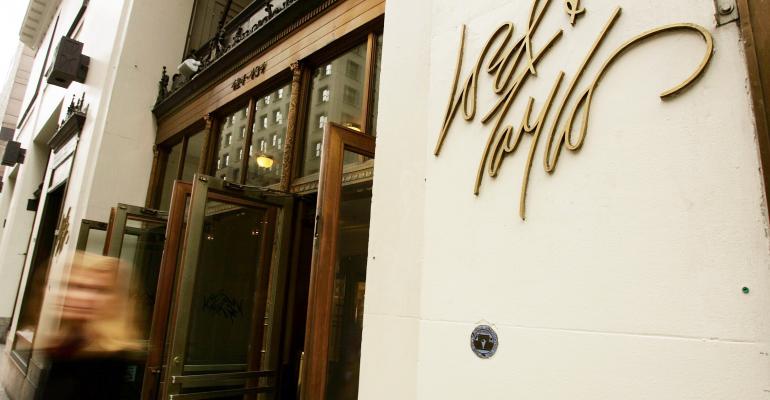At a time when most investors are nervous to embark on new deals, Amazon has charged ahead with plans to expand its footprint in the Big Apple. The e-commerce giant acquired the iconic Lord & Taylor flagship building in Midtown Manhattan from troubled co-working operator WeWork for $978 million, according to New York City Department of Finance records.
While at least a temporary recession is now all but a certainty, this deal was in the works long before COVID-19 became an immediate threat to the U.S., notes Eric Anton, associate broker in the New York office of brokerage firm Marcus & Millichap.
WeWork acquired the building for its headquarters in 2019 and announced a lavish, $438 million renovation project to reposition it to office space. But a failed attempt to go public followed, and the company never moved into the building.
The price tag Amazon is paying is $128 million above the $850 million WeWork paid the Hudson Bay Co. for the building last year. As part of the deal, Amazon also paid off a $379 million construction loan to Starwood Property Trust for capital improvements WeWork incurred to convert the space from retail to office, according to research firm CoStar Group.
However, the new price is not over the top, according to Stephen Shapiro, senior managing director for New York capital markets and investment services group with real estate services firm Colliers International. It works out to about the $1,500 per sq. ft., an average price for class-A office space in Manhattan, he notes.
Overall, January and February brought 11 office property investment deals in Manhattan, with a total value of roughly $1.8 billion, according to data from research firm Real Capital Analytics (RCA). RCA does not track average prices by asset grade, but the top quartile of Manhattan office sales closed in the 12-month period ending in February carried an average price per sq. ft. of $1,114.
Meanwhile, WeWork is only recapturing a little more $350 million in equity from its initial investment in the building, reported the New York Post. The company has waived any economic interest in the building in exchange for getting out of its lease.
“WeWork signed an above-market lease for the space in the building two years ago, so I think they were very happy that an incredibly good user showed up to take over (this financial responsibility),” says Anton.
WeWork never officially put the building on the block, according to both Anton and Shapiro, but Shapiro contends that if it had been, it would have likely attracted investors from around the globe due to its prime location and landmark status.
Completed in 1914, the iconic, 12-level, 662,729-sq.-ft structure, which was designed by Starrett & Van Vleck in Italian Renaissance Revival style, is located at 424–434 Fifth Avenue, between West 38th and 39th streets in Manhattan.
The building is slated to serve as Amazon’s New York headquarters, opening in 2021, and will house several thousand employees, according to the New York Post.
This deal will expand Amazon’s presence in the New York tri-state are, after it was forced by public backlash to abandon plans last year for locating half of its HQ2 project in Long Island City. The company also signed a lease for 335,000 sq. ft. at Hudson Yards in 2019, where it plans to house about 1,500 employees.
“Jeff Bezos has been looking for the right space for quite awhile, so this was not a surprise,” says Shapiro. “This asset is in a prime location, and Amazon will give it back the luster it once had. While Amazon didn’t completely get its HQ2 here, its getting a beachhead.”
The building’s large floor plates, big windows and high ceilings make it an ideal space for technology uses, according to Anton. “And it’s in a great location on Fifth Avenue, equal distances between Penn Station and Grand Central Terminal and nearby Bryant Park.”
The building’s retail-friendly design and historical use will likely provide Amazon with other advantages too, allowing its research department to use the street-level space to develop and pilot new retail pop-up concepts, like Amazon Go, Anton adds. This location “could become the cutting edge of the retail world,” he notes.





